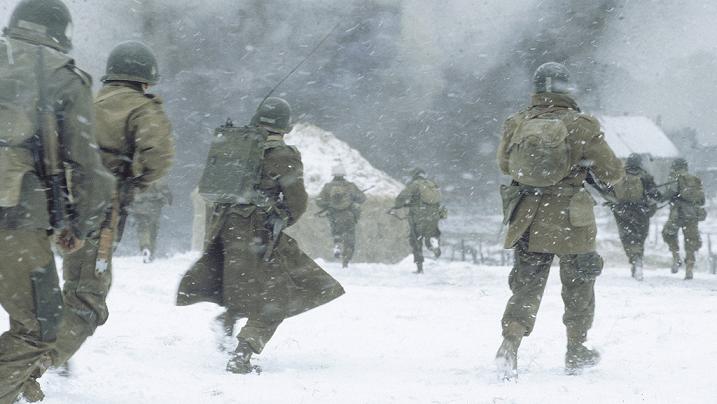This post has not been edited by the GamesBeat staff. Opinions by GamesBeat community writers do not necessarily reflect those of the staff.
Once More Unto the Breach, Dear Friends, Once More!
Another November and the world of gaming has once again been invaded by the latest Call of Duty title. While Call of Duty has redefined blockbuster with record sales each year, certain criticisms of the series have become an annualized phenomenon as well.
Since the very first Call of Duty one of the primary complaints about the single player campaign has been the use of infinitely respawning enemies. Black Ops is no exception, but in my eyes this is actually one of Call of Duty’s greatest and most important innovations.
Before Call of Duty hit the scene, military FPS games had trained players to proceed with an unrealistic level of caution. If you moved slowly, from cover to cover patiently waiting for every last enemy to poke his head out you could kill them all before attempting to proceed.
While this tactic may be prudent in many games, it is not a good representation of how to succeed in real combat.
Whenever I hear someone complaining about a sequence where the enemies keep coming until they advance to an “arbitrary trigger point”, I’m reminded of a particular sequence in HBO’s excellent World War II miniseries, Band of Brothers. During the episode “The Breaking Point” Easy Company of the 101st Airborne Division, having just survived the Siege of Bastogne, is tasked with assaulting a nearby town still held by the Germans.

The primary thrust of the episode is an examination of Easy Company’s new commander, Lt. Dike, and his failure to succeed in that role under fire. When the assault begins EZ company must cross an open field under whithering fire from German snipers and machine gun positions.
Lt. Dike panics and orders a halt before they have reached the town. His men are spread out, cowering behind bales of hay and old wooden carts which provide little protection. Captain Winters, the Battalion commander who had previously lead Easy Company, is forced to send Lt. Spiers to relieve Dike of his command and order the assault resumed.
The whole sequence, like many others in the miniseries, gives us a clear illustration of how important it is to advance when attempting to assault a position, and the dangers of thinking you can sit back and wait until you’ve killed enough enemies to proceed safely.
Inifintely respawning enemies is, granted, a slightly gamey mechanism, but Infinity Ward and Treyarch have used it in the Call of Duty franchise very effectively to reinforce that point, that you have to keep moving!
When I play a Call of Duty game, I know what I have to do. I’m not the most skilled shootist in the world, so I know running headlong into fire will frequently result in my death. To me, that’s acceptable.
Dying and replaying a difficult sequence again and again is just a feature of this type of game. Each time I will try something different to adjust my approach to a particular clash. Maybe I’ll change up my weapons, or try approaching from a different direction or rushing forward to a different piece of cover.
I enjoy when a game provides enough challenge to encourage such experimentation, and amazingly, the pressure to keep advancing still feels uniquely “Call of Duty”. It’s the one element of the franchise that doesn’t seem to have been widely imitated.
Of course, that’ not to say there aren’t frustrating sequences in Black Ops deserving of criticism. Many have rightly complained about a particular moment in Khe Sanh where it’s not clear what the game wants you to do with some barrels of Napalm, but that’s an example of poor communication to the player.

I personally had a great deal of trouble later in the game when a rocket takes out the catwalk I was on and I couldn’t figure out how to jump across to the other side. The problem there was the very short time the game gives you before deciding you’ve failed the mission for not keeping up with your team.
Neither of these situations, however, can be blamed on respawning enemies, and both could have been remedied without altering that signature feature.
Really, it comes down to a difference in play style, player tendencies and expectations. I don’t think there’s anything wrong with not liking the kind of game Call of Duty represents, but I take exception to claims that infinitely respawning enemies are cheap, lazy or bad design.
Call of Duty requires a certain approach from the player. To complain about that is like complaining that a stealth-based game doesn’t allow you to successfully run and gun or that Oregon Trail doesn’t reward your revolutionary turtling strategy.
So, how do you play Call of Duty? Do you run strait through a crossfire (twice!) to deliver orders to a cutoff platoon like Lt. Spiers or do you cower in the grass like Lt. Dike?
